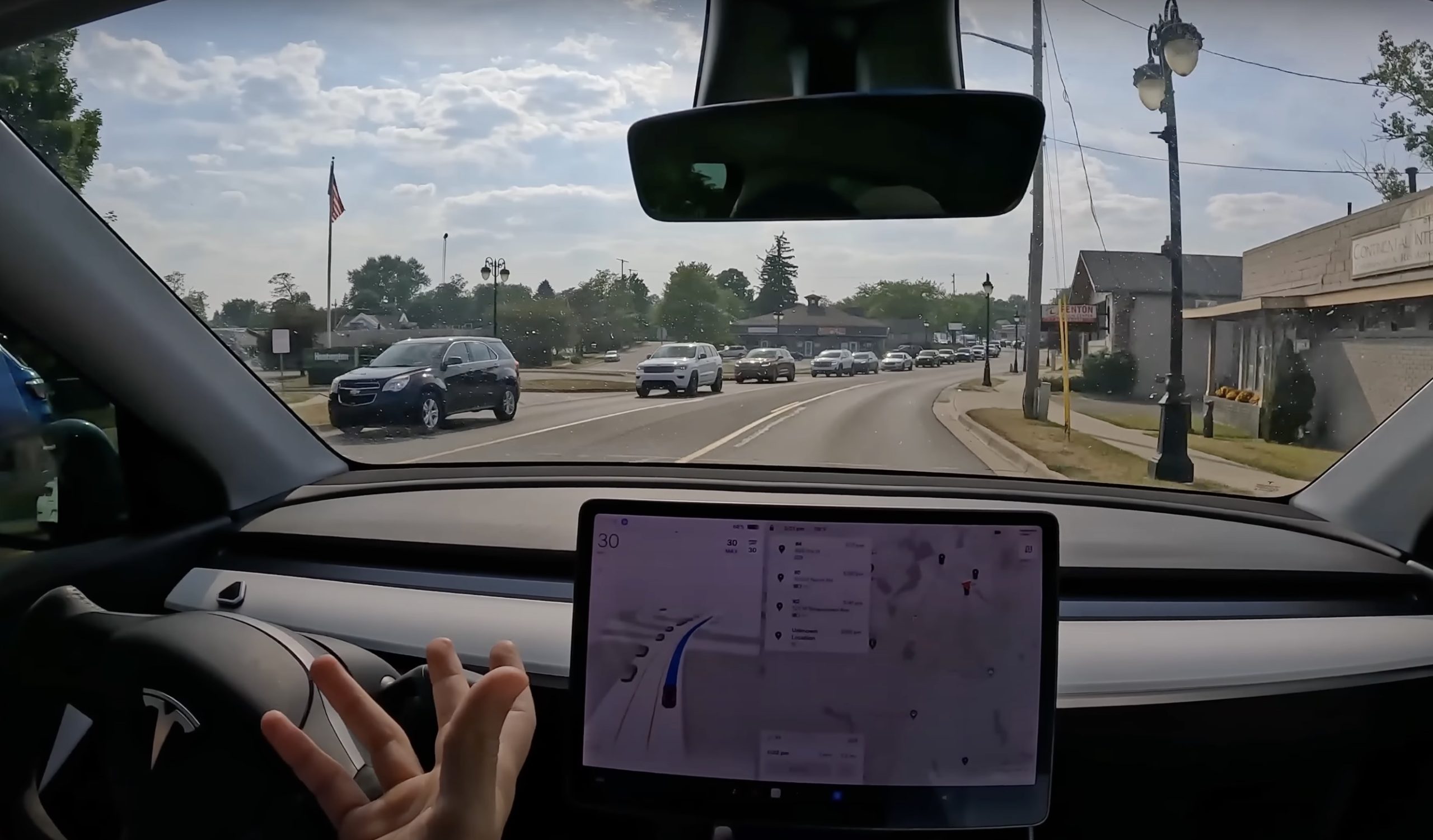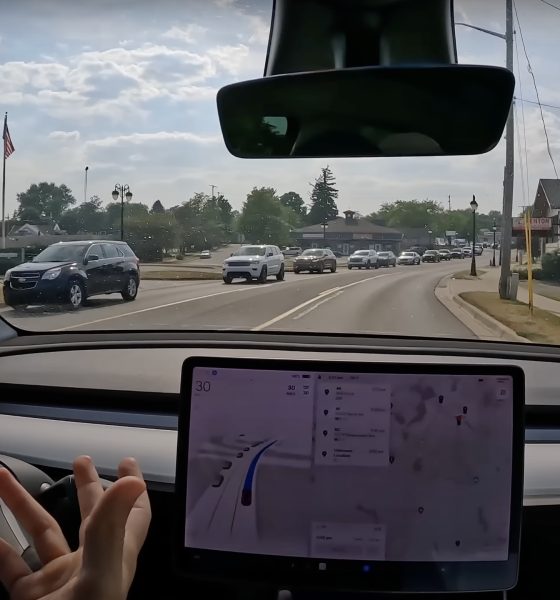

News
Elon Musk says next FSD version to let drivers wear sunglasses
Tesla’s next version of Full Self-Driving (FSD) has been widely discussed in recent weeks, and a new update from CEO Elon Musk over the weekend highlights the fact that it won’t prevent drivers from wearing sunglasses anymore.
The FSD Supervised system uses a driver monitoring feature that makes sure drivers remain attentive and awake, though the system won’t allow the driver to wear sunglasses with the system engaged without nags. In response to one X user complaining about not being able to wear sunglasses while using FSD on Saturday, Musk wrote that the issue would be fixed in v12.5, to which many users in the thread expressed appreciation.
Should be fixed in 12.5
— Elon Musk (@elonmusk) July 21, 2024
Tesla FSD v12.4.1 with no nag starts rolling out to select customers
It’s still not clear exactly when Tesla plans to start deploying FSD Supervised v12.5.
Musk originally said that FSD v12.5 would be out in late June, and many are especially waiting for the update as it’s expected to finally bring FSD Supervised to the Cybertruck. Despite missing the late June target for the release, Musk has highlighted a handful of the other improvements in the version, as well as noting on Thursday that the release was in fact ready to hit the Cybertruck upon its deployment.
He also said this month that FSD Supervised v12.5 will finally merge the city and highway software stacks, as was previously done with v11, though it was apparently rolled back at some point with the arrival of v12.
Tesla started rolling out FSD Supervised v12.4.3 to some customers earlier this month, after previous versions had been delayed due to an extremely low level of interventions—and after the company essentially halted the rollout of v12.4.2.
Musk highlighted the issue of low interventions earlier this month.
The amount of testing time it takes to figure out if the new AI is better than the existing AI as measured by miles between interventions is the limiting factor on progress.
The better FSD gets the longer it takes to find interventions.
— Elon Musk (@elonmusk) July 12, 2024
He also detailed the problem during Tesla’s Annual Shareholder Meeting last month, explaining that the fewer interventions there are, the more difficult it becomes to test versions and point versions against each other to see which ones are performing best.
“And then, like I was saying earlier, it actually gets, as the system gets better, it gets harder to figure out which AI model is better, because now you know, like, ‘Okay, it’s thousands of miles between interventions.’
“How do we, as quickly as possible, figure out which AI model is better. And when you make these different AI models, they’re obviously not like super deterministic, so we have a new model that eliminates one problem but creates another problem. So we’re trying to solve this by a combination of simulation, uploading models, having them run in Shadow Mode.
“It’s actually kind of helpful that not everyone has Full Self-Driving, because we can see, we can run it in Shadow Mode and see, ‘What would this new model have done compared to what the user did?’
“So since we’ve got, you know, millions of cars that we can do this with, that gives us a delta between what the AI model predicted would do and the user would do. And if you kind of sum up the errors between them, you can see ‘Oh, there was a bigger error stack from this model versus that model,’ when you uploaded them into, each uploaded them into 100,000 cars.
“But that’s the biggest limiter right now. It’s not training, it’s not data, it’s actually testing the AI models. And then figuring out clever ways to figure out if a new model is better or not. Like there were sort of particular intersections that are difficult.”
RELATED:
Tesla offers owners $1,000 off to upgrade from EAP to FSD in new car
What are your thoughts? Let me know at zach@teslarati.com, find me on X at @zacharyvisconti, or send us tips at tips@teslarati.com.

News
Tesla FSD fleet is nearing 7 billion total miles, including 2.5 billion city miles
As can be seen on Tesla’s official FSD webpage, vehicles equipped with the system have now navigated over 6.99 billion miles.

Tesla’s Full Self-Driving (Supervised) fleet is closing in on almost 7 billion total miles driven, as per data posted by the company on its official FSD webpage.
These figures hint at the massive scale of data fueling Tesla’s rapid FSD improvements, which have been quite notable as of late.
FSD mileage milestones
As can be seen on Tesla’s official FSD webpage, vehicles equipped with the system have now navigated over 6.99 billion miles. Tesla owner and avid FSD tester Whole Mars Catalog also shared a screenshot indicating that from the nearly 7 billion miles traveled by the FSD fleet, more than 2.5 billion miles were driven inside cities.
City miles are particularly valuable for complex urban scenarios like unprotected turns, pedestrian interactions, and traffic lights. This is also the difference-maker for FSD, as only complex solutions, such as Waymo’s self-driving taxis, operate similarly on inner-city streets. And even then, incidents such as the San Francisco blackouts have proven challenging for sensor-rich vehicles like Waymos.
Tesla’s data edge
Tesla has a number of advantages in the autonomous vehicle sector, one of which is the size of its fleet and the number of vehicles training FSD on real-world roads. Tesla’s nearly 7 billion FSD miles then allow the company to roll out updates that make its vehicles behave like they are being driven by experienced drivers, even if they are operating on their own.
So notable are Tesla’s improvements to FSD that NVIDIA Director of Robotics Jim Fan, after experiencing FSD v14, noted that the system is the first AI that passes what he described as a “Physical Turing Test.”
“Despite knowing exactly how robot learning works, I still find it magical watching the steering wheel turn by itself. First it feels surreal, next it becomes routine. Then, like the smartphone, taking it away actively hurts. This is how humanity gets rewired and glued to god-like technologies,” Fan wrote in a post on X.
News
Tesla starts showing how FSD will change lives in Europe
Local officials tested the system on narrow country roads and were impressed by FSD’s smooth, human-like driving, with some calling the service a game-changer for everyday life in areas that are far from urban centers.

Tesla has launched Europe’s first public shuttle service using Full Self-Driving (Supervised) in the rural Eifelkreis Bitburg-Prüm region of Germany, demonstrating how the technology can restore independence and mobility for people who struggle with limited transport options.
Local officials tested the system on narrow country roads and were impressed by FSD’s smooth, human-like driving, with some calling the service a game-changer for everyday life in areas that are far from urban centers.
Officials see real impact on rural residents
Arzfeld Mayor Johannes Kuhl and District Administrator Andreas Kruppert personally tested the Tesla shuttle service. This allowed them to see just how well FSD navigated winding lanes and rural roads confidently. Kruppert said, “Autonomous driving sounds like science fiction to many, but we simply see here that it works totally well in rural regions too.” Kuhl, for his part, also noted that FSD “feels like a very experienced driver.”
The pilot complements the area’s “Citizen Bus” program, which provides on-demand rides for elderly residents who can no longer drive themselves. Tesla Europe shared a video of a demonstration of the service, highlighting how FSD gives people their freedom back, even in places where public transport is not as prevalent.
What the Ministry for Economic Affairs and Transport says
Rhineland-Palatinate’s Minister Daniela Schmitt supported the project, praising the collaboration that made this “first of its kind in Europe” possible. As per the ministry, the rural rollout for the service shows FSD’s potential beyond major cities, and it delivers tangible benefits like grocery runs, doctor visits, and social connections for isolated residents.
“Reliable and flexible mobility is especially vital in rural areas. With the launch of a shuttle service using self-driving vehicles (FSD supervised) by Tesla in the Eifelkreis Bitburg-Prüm, an innovative pilot project is now getting underway that complements local community bus services. It is the first project of its kind in Europe.
“The result is a real gain for rural mobility: greater accessibility, more flexibility and tangible benefits for everyday life. A strong signal for innovation, cooperation and future-oriented mobility beyond urban centers,” the ministry wrote in a LinkedIn post.
News
Tesla China quietly posts Robotaxi-related job listing
Tesla China is currently seeking a Low Voltage Electrical Engineer to work on circuit board design for the company’s autonomous vehicles.

Tesla has posted a new job listing in Shanghai explicitly tied to its Robotaxi program, fueling speculation that the company is preparing to launch its dedicated autonomous ride-hailing service in China.
As noted in the listing, Tesla China is currently seeking a Low Voltage Electrical Engineer to work on circuit board design for the company’s autonomous vehicles.
Robotaxi-specific role
The listing, which was shared on social media platform X by industry watcher @tslaming, suggested that Tesla China is looking to fill the role urgently. The job listing itself specifically mentions that the person hired for the role will be working on the Low Voltage Hardware team, which would design the circuit boards that would serve as the nervous system of the Robotaxi.
Key tasks for the role, as indicated in the job listing, include collaboration with PCB layout, firmware, mechanical, program management, and validation teams, among other responsibilities. The role is based in Shanghai.
China Robotaxi launch
China represents a massive potential market for robotaxis, with its dense urban centers and supportive policies in select cities. Tesla has limited permission to roll out FSD in the country, though despite this, its vehicles have been hailed as among the best in the market when it comes to autonomous features. So far, at least, it appears that China supports Tesla’s FSD and Robotaxi rollout.
This was hinted at in November, when Tesla brought the Cybercab to the 8th China International Import Expo (CIIE) in Shanghai, marking the first time that the autonomous two-seater was brought to the Asia-Pacific region. The vehicle, despite not having a release date in China, received a significant amount of interest among the event’s attendees.








